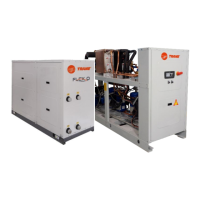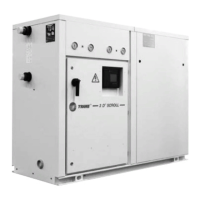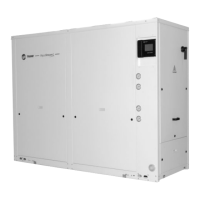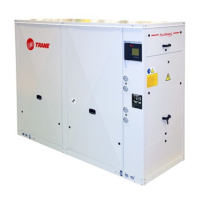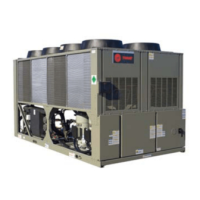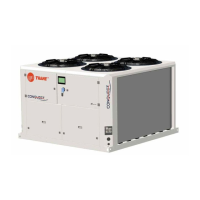42 CGWF-SVX01A-EN
Installation Mechanical
Leak Test
Once refrigerant piping is complete, thoroughly test the system for leaks.
System Evacuation
For field evacuation, use a rotary-style vacuum pump capable of pulling a vacuum of
100 microns or less. Follow the pump manufacture’s instructions for proper use of the
pump. The line used to connect the pump to the system should be copper and of the
largest diameter that can practically be used. Using a larger line size with minimum
flow resistance can significantly reduce evacuation time.
Rubber or synthetic hose are not recommended for unit evacuation because they
have moisture absorbing characteristics which result in excessive outgassing and
pressure rise during the standing vacuum test. This makes it impossible to determine
if the unit has a leak, contains excessive moisture, or is experiencing a continual high
rate of pressure increase due to the hoses.
NOTE: Insure that all sections of the refrigerant system are properly evacuated.
CAUTION
Equipment Damage!
Do not use a megohm meter or apply power to compressor windings
under vacuum. This may damage motor windings.
Refrigerant Charging
Once the system is properly installed, leak tested and evacuated, refrigerant charging
can begin. Liquid refrigerant must be charged into each circuit through the liquid line
access valve with the compressor(s) off.
CAUTION
Equipment Damage!
To prevent evaporator tube rupture, never charge liquid refrigerant into a
water vessel when refrigerant temperature/pressure relationship of the
vessel is below freezing.
Charge refrigerant into the system by weight. Use an accurate scale or charging
cylinder to determine the exact charge entering the system. Failure to charge the
system accurately can lead to under or over-charging and result in unreliable
operation.
If system pressure equalize before the full charge enters the system, close the
charging port and proceed to “Start-up Procedure”. Once the unit is operating, add the
remainder of the required charge to the system.
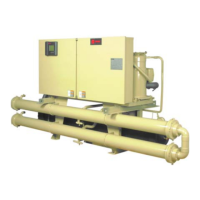
